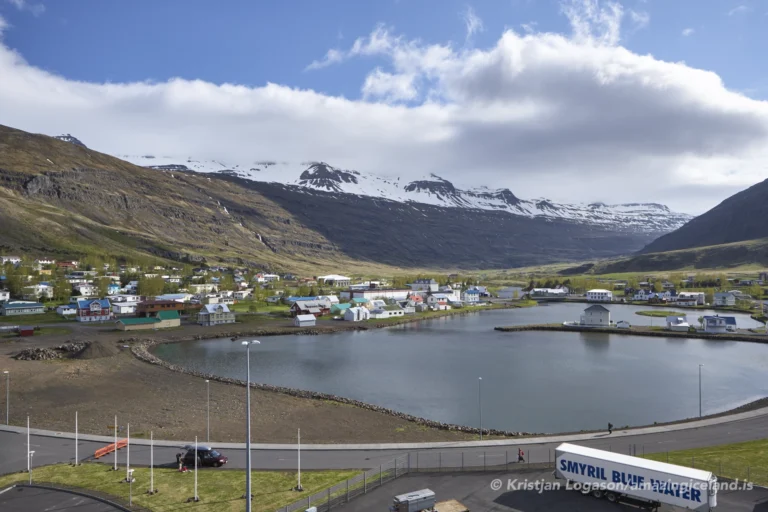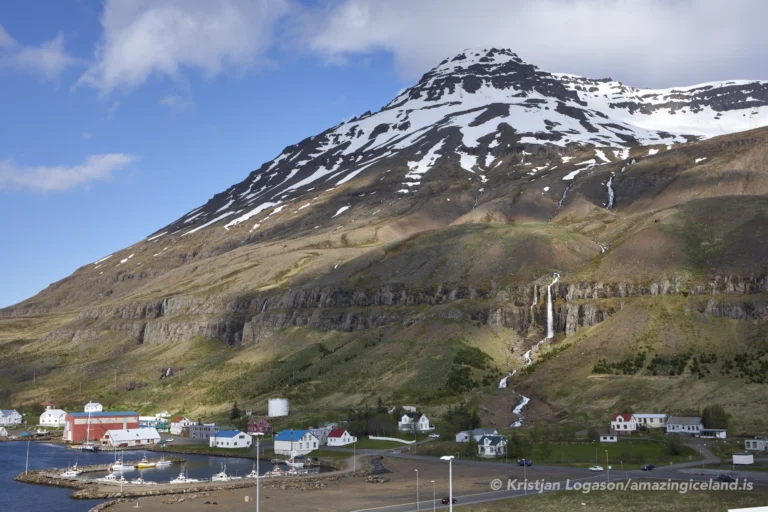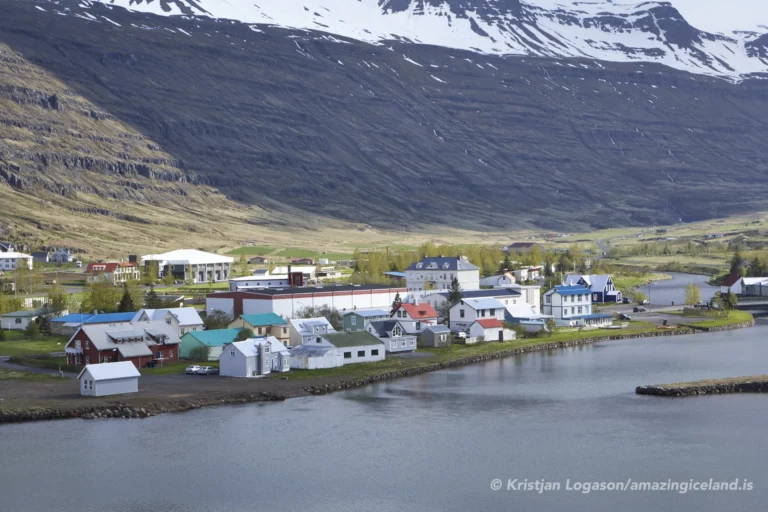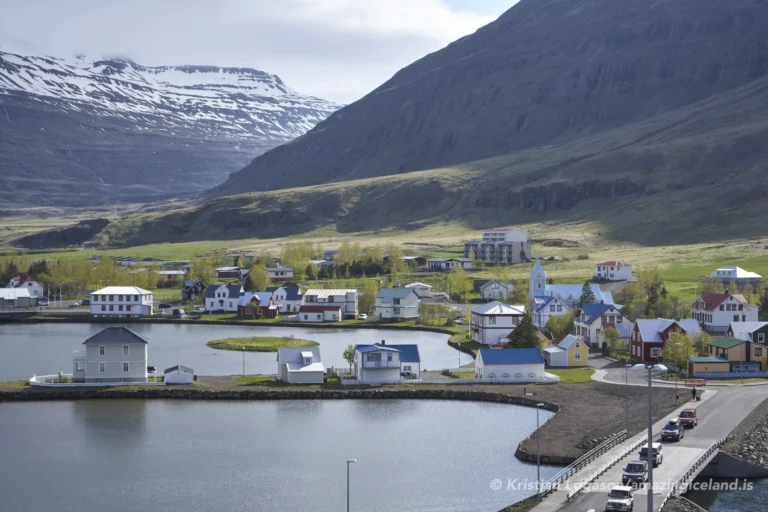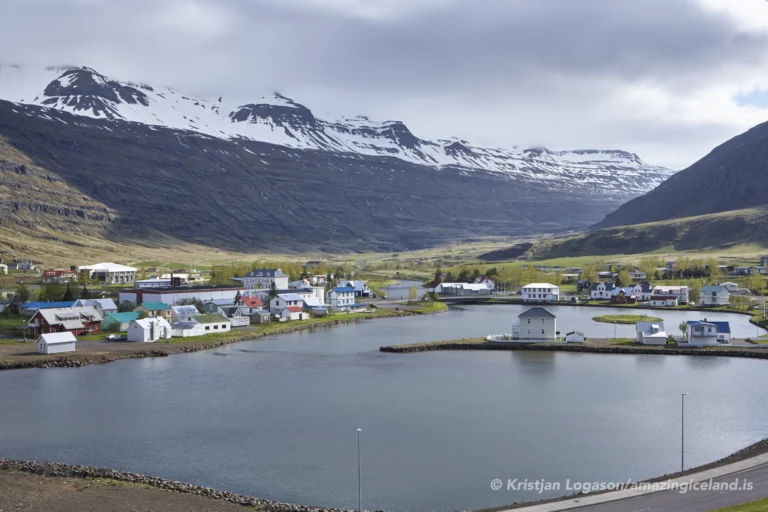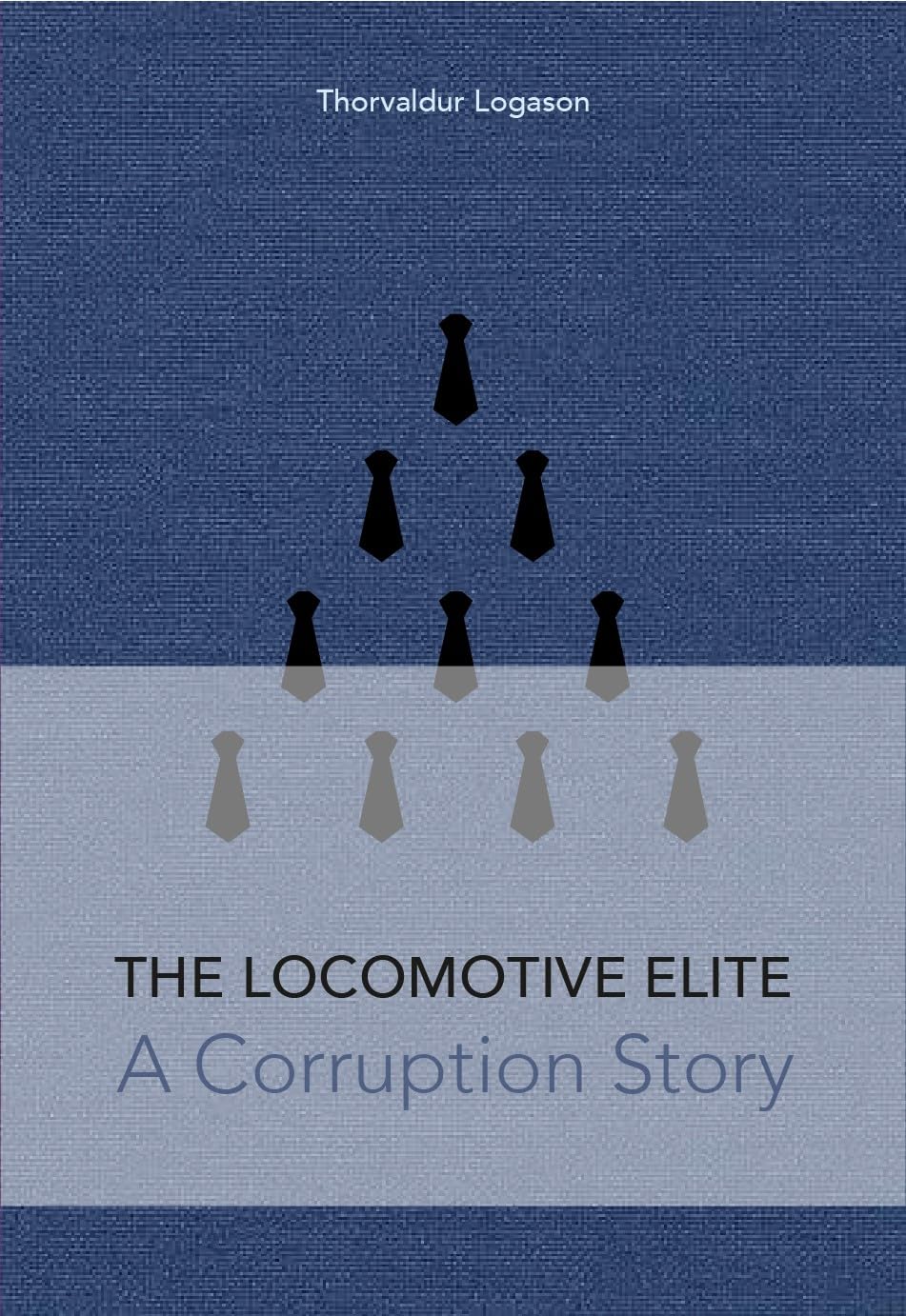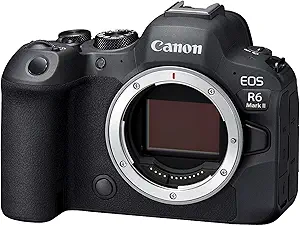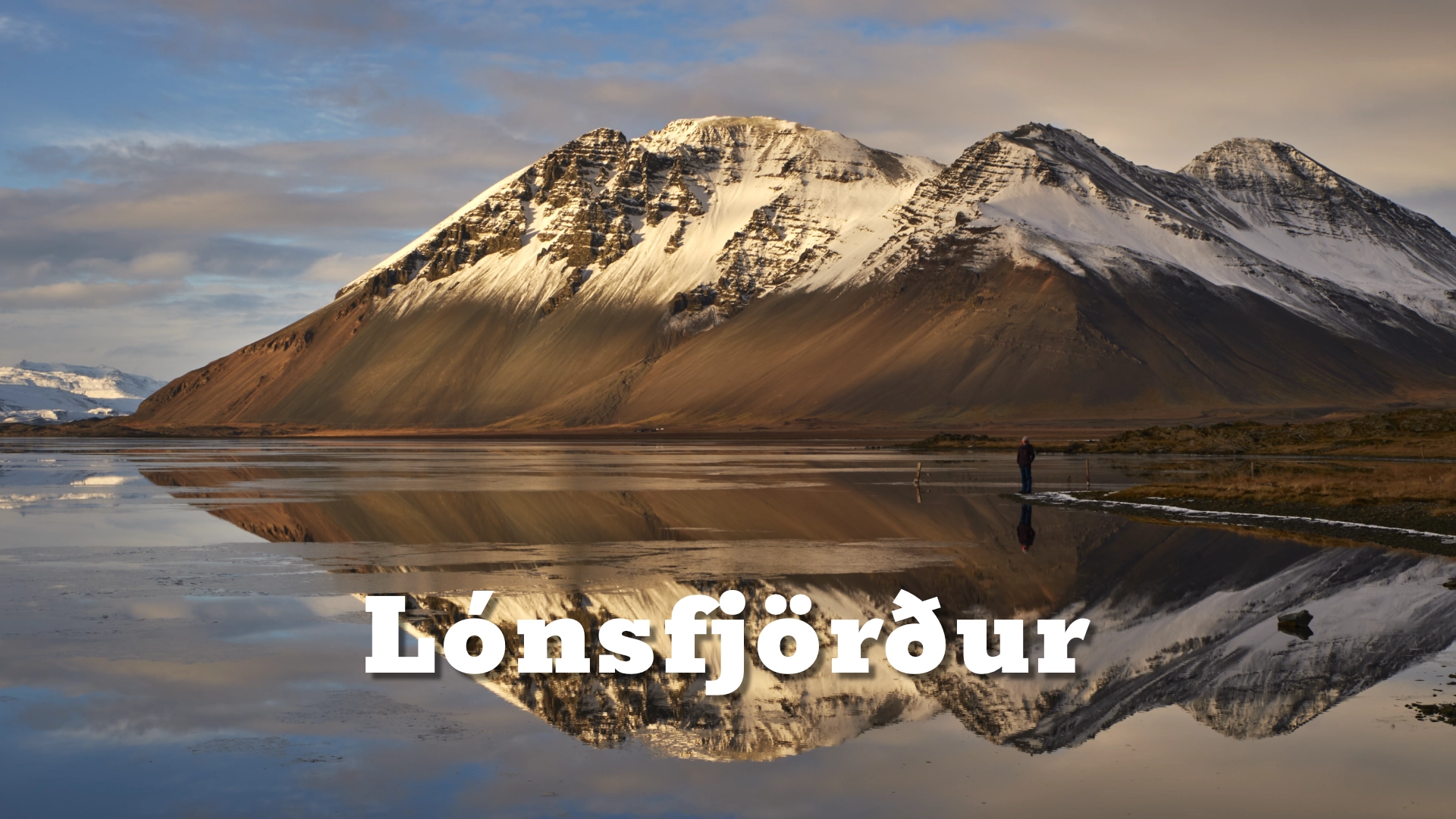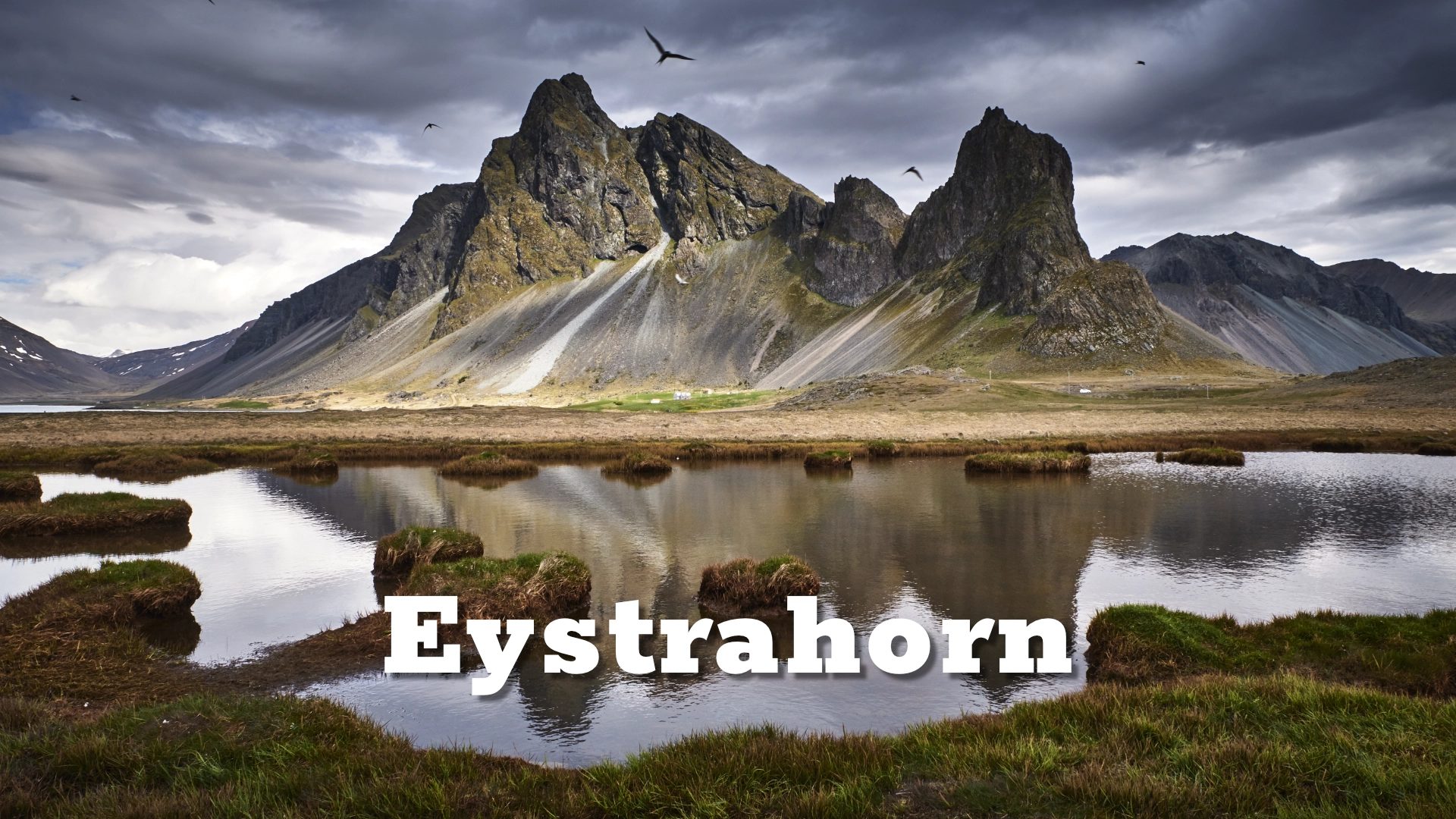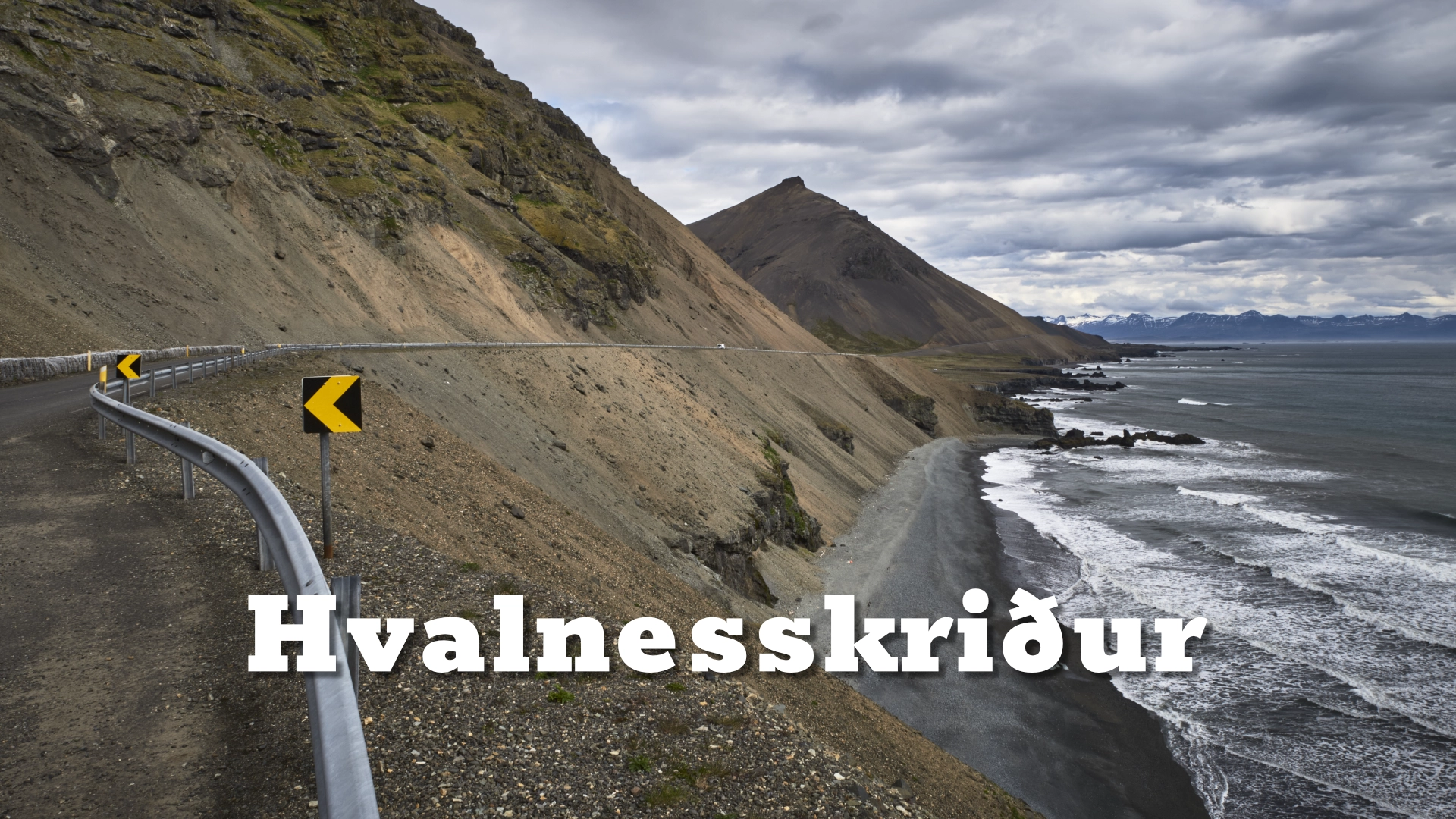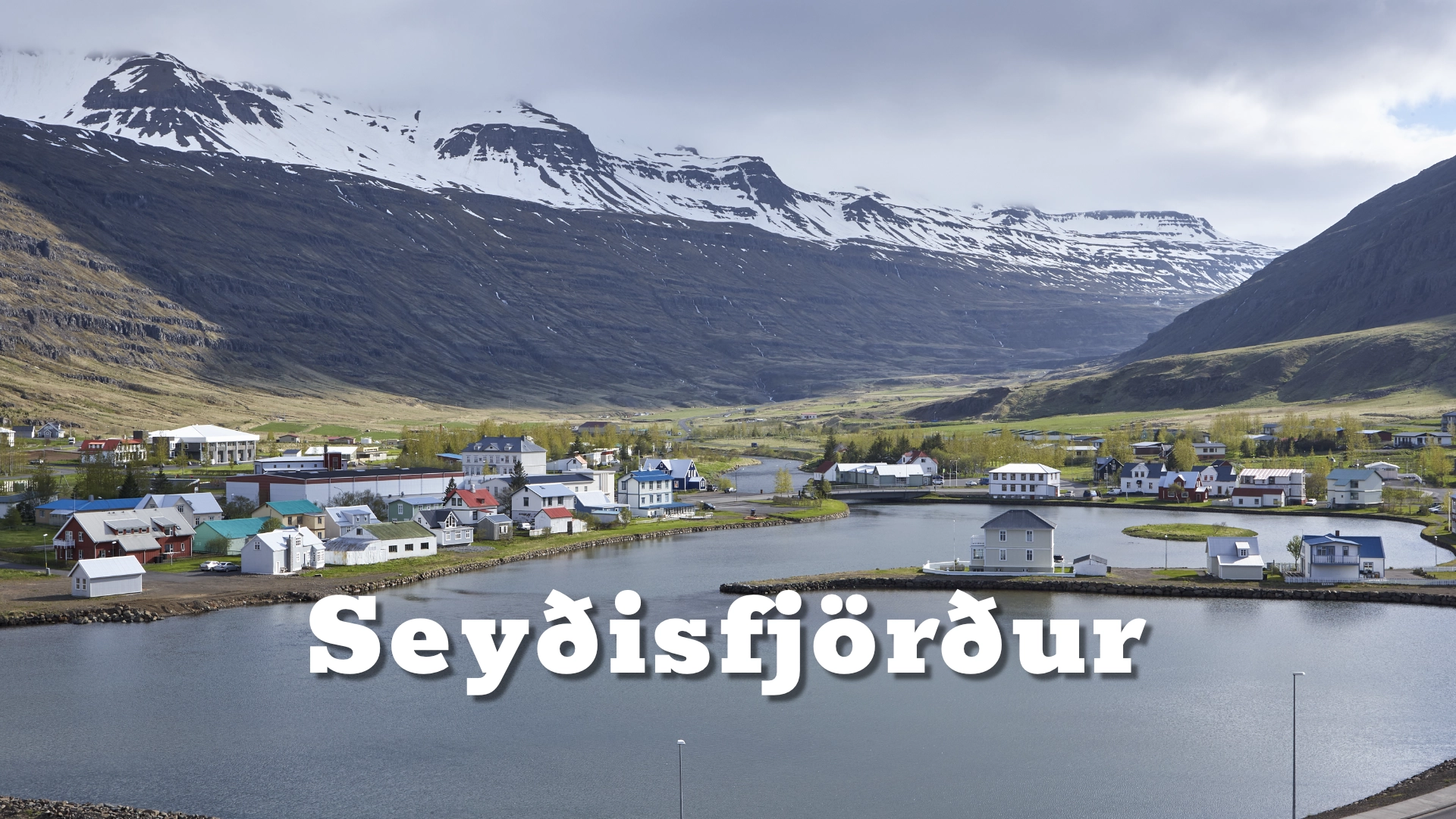
Founded in the late 19th century, Seyðisfjörður was historically a hub for fishing and trade, particularly with Norway. Today, it’s a peaceful community of around 700 residents that embraces both its maritime heritage and a vibrant creative culture.
The location of Seyðisfjörður: A Hidden Cultural Gem in East Iceland
Latitude
65.26061677462377
Longitude
-14.010054835079268
Seyðisfjörður: A Hidden Cultural Gem in East Iceland
Seyðisfjörður: A Hidden Cultural Gem in East Iceland
Seyðisfjörður is one of Iceland’s most enchanting villages, located at the innermost point of a narrow, mountainous fjord in the Eastfjords region. Surrounded by steep, snow-dusted peaks and cascading waterfalls, the town is known for its charming Norwegian-style wooden houses, artistic atmosphere, and dramatic natural scenery.
Founded in the late 19th century, Seyðisfjörður was historically a hub for fishing and trade, particularly with Norway. Today, it’s a peaceful community of around 700 residents that embraces both its maritime heritage and a vibrant creative culture. It’s also the arrival point for the weekly ferry from mainland Europe via the Smyril Line, making it a rare port of international entry.
The town’s colorful architecture and fjord-side location make it one of the most photogenic destinations in Iceland, particularly in summer when the valley blooms with wildflowers and art installations pop up throughout the streets.
Art and Identity in Seyðisfjörður: Where Nature Inspires Culture
Seyðisfjörður has developed a reputation as one of Iceland’s key cultural centers. Home to LungA (Listahátíð unga fólksins), an annual art and music festival celebrating young creatives, the town bursts into life every summer with workshops, exhibitions, and performances that bring global artists together.
The Technical Museum of East Iceland offers a window into the region’s industrial past, showcasing Iceland’s first telegraph station and maritime tools that tell the story of Seyðisfjörður’s early prosperity. Another highlight is the iconic Blue Church (Bláa Kirkjan), which doubles as a concert venue known for hosting intimate performances during cultural events.
Creativity seems to be woven into the very fabric of the town, from community murals to interactive sculpture trails. Artists are drawn here by the remote serenity, rich light, and the dramatic juxtaposition of wild landscapes and intimate village life.
How to Visit Seyðisfjörður: Journey into Iceland’s Eastern Fjords
Getting to Seyðisfjörður is part of the adventure. The most dramatic approach is via Route 93, which crosses a high mountain pass from Egilsstaðir and descends into the fjord with unforgettable views. The pass is often snow-covered well into spring, adding to the fairytale feel of the journey.
The town is a base for exploring the Eastfjords’ hiking trails, waterfalls, and coastal wildlife. Short walks take visitors to nearby attractions like the Tvísöngur Sound Sculpture, a series of concrete domes that amplify ambient sounds. More ambitious hikers can explore longer routes into the surrounding mountains or follow the Vestdalur Heritage Trail past ruins and waterfalls.
Kayaking, fishing, and birdwatching are all popular in the summer months, while winter turns Seyðisfjörður into a quiet, snow-draped retreat far from the tourist crowds.
Interesting facts:
Unique Feature: Rainbow Street leading to the Blue Church
The Locomotive Elite
What do Donald Trump and Iceland’s Locomotive Elite have in common?
Far more than you think.
In The Locomotive Elite, you’ll uncover how a tiny clique in Iceland captured extensive control—of banks, courts, media, and even the central bank.
For decades they ruled, first democratically, then through corruption and in the end through crime, enriching themselves and their cronies while dismantling oversight.
The result?
One of the most spectacular financial collapses in modern history.
